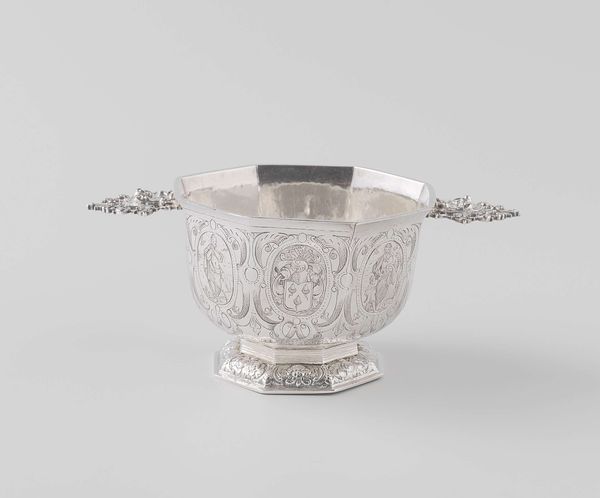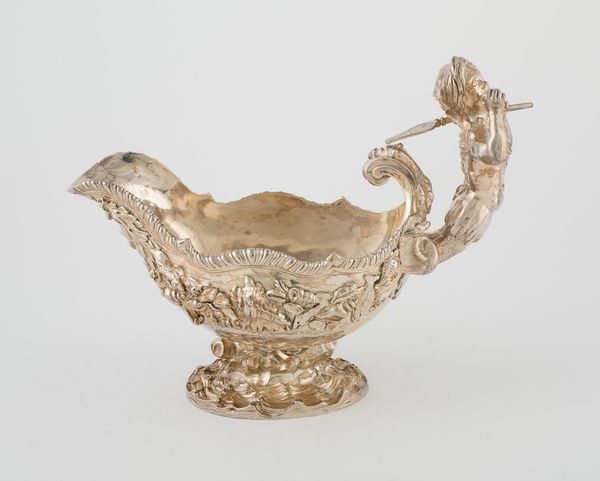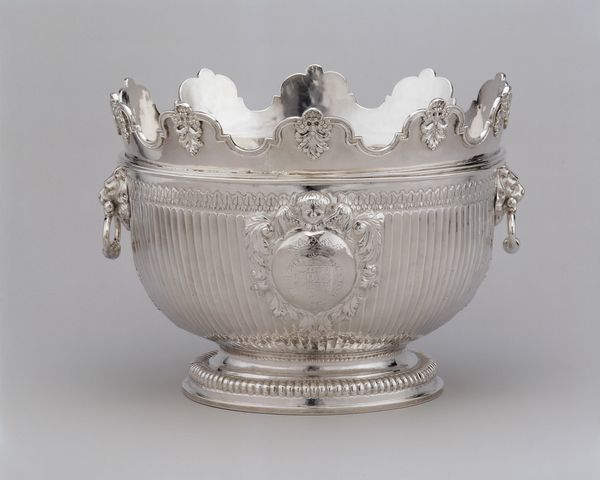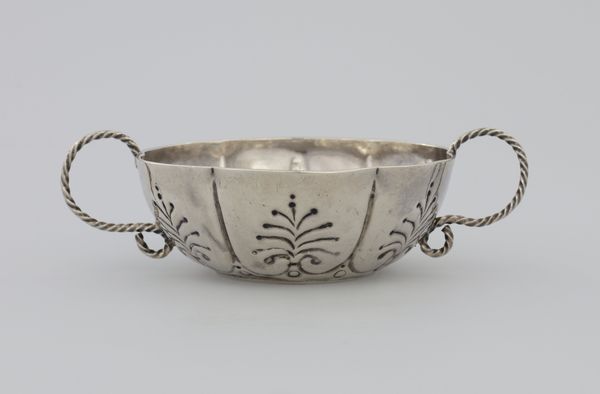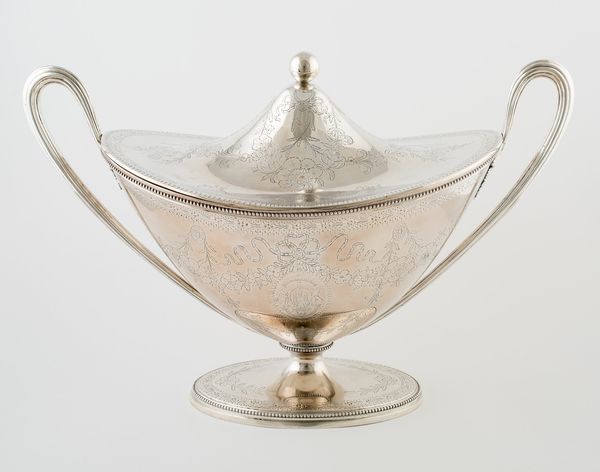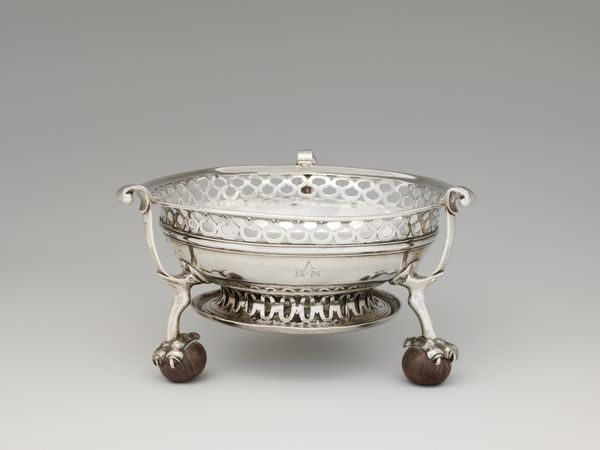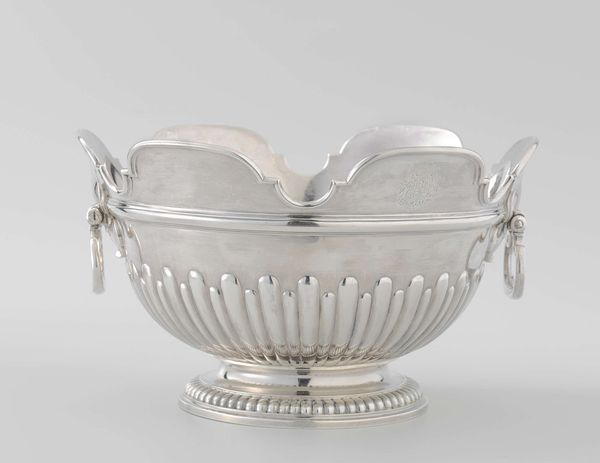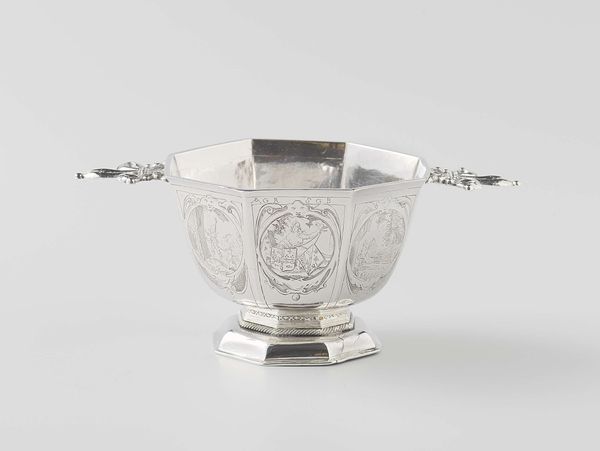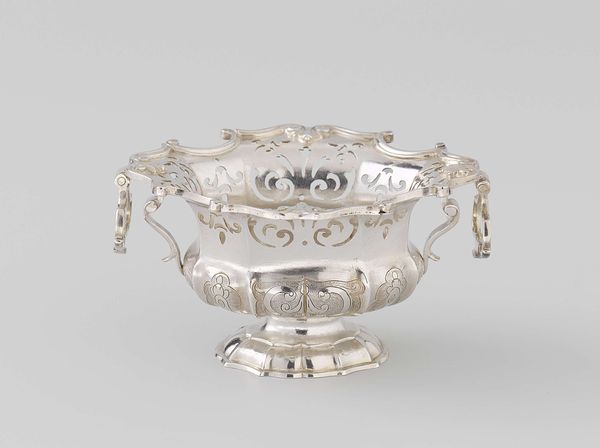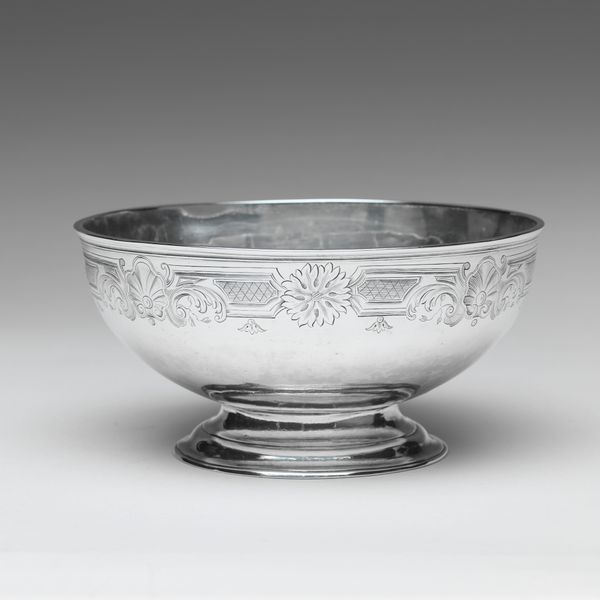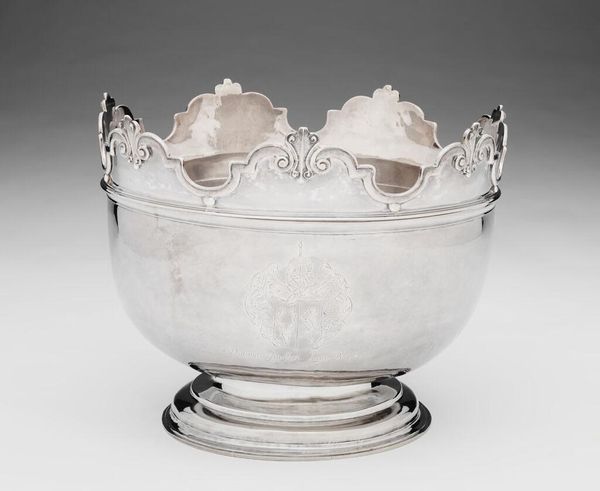
silver, metal
#
silver
#
baroque
#
metal
#
stoneware
#
ceramic
#
decorative-art
Dimensions: height 9.1 cm, diameter 11.6 cm, width 20.4 cm
Copyright: Rijks Museum: Open Domain
Curator: It’s so elegant! Like liquid moonlight captured in solid form. Editor: Indeed. What you’re admiring is a Brandewijnkom crafted by Pieter Jacobs Clinckhamer in 1672. It’s a Baroque silver bowl. Curator: "Brandewijnkom" sounds so… Dutch. It feels grand, ceremonial almost. It's also kind of surprising to see such a detailed relief work on drinkware – a stark contrast to, let’s say, your everyday coffee mug. How would the wealthy show off items like these back then? Editor: Vessels such as these affirmed status. Their presence was intended to signify a household’s wealth, discernment and cultivated taste. Note also how such pieces offered patrons a public venue to express personal stories, virtues and family ties. Curator: Ah, that makes perfect sense. I can see it—the way the light catches the figures in the relief. The engraver certainly made every inch shimmer, and each face seems to tell its own tiny story, I can only image it at a feast, brimming with brandy. Tell me more of its story. Editor: Brandewijnkoms like these were popular in the Netherlands during the 17th and 18th centuries, as brandy consumption became integrated into social and political life. The symbolism decorating its exterior is rich— often moralizing depictions which provided those in attendance a reminder of social ideals. Silver's inherent reflective properties add to the communal sense of festivity too; such luxury would only be available to select few individuals that is those holding significant means. Curator: The reflective qualities also hint at transformation and illusion, something deeper maybe. This little brandy bowl isn’t merely an object, is it? It’s a vessel of memory. It reminds me how even mundane rituals, like drinking, were carefully constructed acts that still ripple outwards through history. Editor: Yes, objects like this were potent signs. Each carefully calibrated decision by Clinckhamer in shaping the piece highlights what role artwork plays concerning class distinctions within broader historical systems. The Brandewijnkom presents, in short form, the means that elites sought legitimacy. Curator: Makes me consider what we pour *into* our objects, doesn’t it? The energy we infuse transforms it all into stories long after the parties die down. Thanks, that perspective really helps see beyond just pretty objects. Editor: You’re very welcome. These material traces carry echoes—cultural conversations made tangible. Thank you for guiding us beyond dry fact toward meaning and sentiment.
Comments
No comments
Be the first to comment and join the conversation on the ultimate creative platform.

